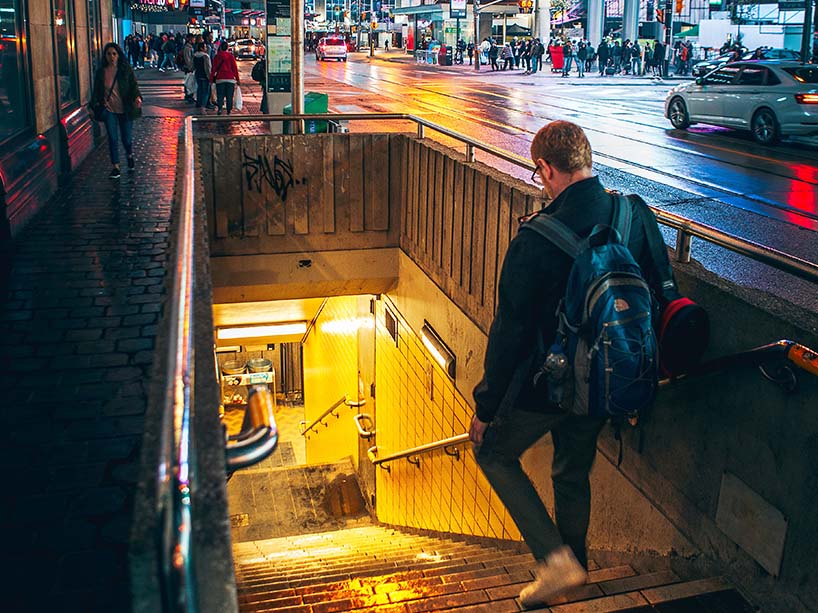Commuting tips from a TMU expert

Looking for transit hacks? Professor Raktim Mitra says there are ways to avoid crowds, like ones at Dundas station.
Updated August 25, 2023
Raktim Mitra, associate professor and director of Toronto Metropolitan University’s (TMU) School of Urban and Regional Planning, knows a thing or two about how students get around. He led the largest-ever study on student transportation (external link) from 2018 to 2022, called StudentMoveTO.
Mitra says that our commuting habits and transportation infrastructure have changed in the past few years.
“People are travelling less, public transit is less crowded and less frequent. But there are safer bicycling routes to get to downtown ”
He adds that with this shift, now is a good time for students, staff and faculty to consider public transit, bicycling or walking as a commute option, when deciding how to get to campus.
“Most students do not drive to TMU campus, and you don’t have to either,” he said.
So, now you’re considering an alternative to driving to come to campus, but you still want to be smart about it? Here are some tips Mitra can offer:
Transit
Avoid peak traffic hours: Students may consider coming to campus earlier, or leaving later, to avoid rush hour and save time commuting. “Enjoy the amenities and extra-curricular activities that our campus has to offer before or after classes, but also plan ahead, as the buses and trains may come less frequently during off peak hours”, Mitra said.
Avoid the crowds at Dundas station: get off early and walk. Yonge and Dundas station is very busy, whereas Wellesley is not. “Think about nearby stations that are less busy.”
Get to know the PATH system: Mitra says TMU has the highest percentage of students who rely on the GO Transit system to get to campus. He suggests getting to know the PATH system (external link) for a more pleasant walk to campus from Union Station in the cold winter months.
Walking and biking
Mitra notes that TMU students, faculty and staff can pick and choose between many transportation options so if you want to avoid transit all-together, here are some alternative suggestions:
When in doubt, walk or bike: If you live close to campus, walk or bike. Mitra says that walking and biking can sometimes be faster than taking transit.
Use the bike share program to get around: For example, if you get off the subway early, using Toronto’s bike share program allows you to hop on a bike to quickly get to campus from one of the less busy stations. Take advantage of the very inexpensive annual membership.
Mitra chooses to use his bicycle to get to campus regularly. He says that thanks to city programs like ActiveTO (external link) , many improvements have taken place . “There is more safe infrastructure [like more bike lanes] that students can use to get to campus,” he said.Interested in student transportation habits? Visit the StudentMoveTO website (external link) .
Related Stories:
